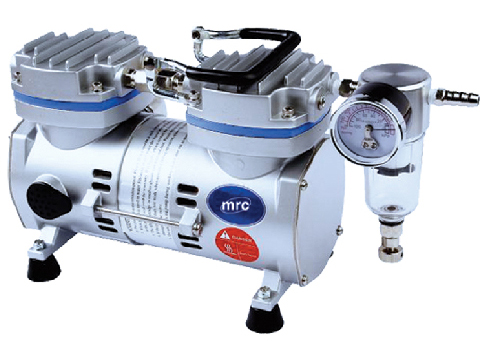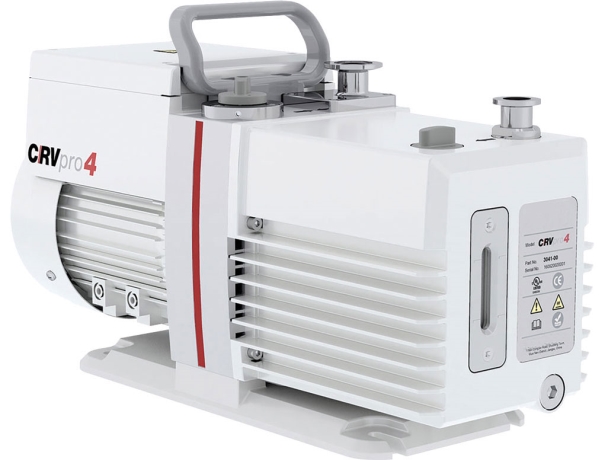MUNRO offers a broad range of vacuum pumps for chemical and biological laboratories for various applications: Rotary evaporators, vacuum ovens, reactors, filtration, gel dryers, freeze dryers, concentrators, manifolds and cell culture, aspiration applications.

For converting between common vacuum units:

Uses of Vacuum Pumps
The differences in vacuum pumps are in the method of pumping, in the flow, the depth of the vacuum and the materials.
-Oil vacuum pumps suitable for vacuum ovens and lyophilizers (freeze drying).
Vacuum pumps Membrane without oil - to create a vacuum in the desiccators and filter
-Turbo pumps-Deep vacuum in vacuum ovens.
Conditions For Purchasing Vacuum Pumps
-Why do you need a vacuum pump? If you only need to filter then a simple vacuum pump is right for you. If you need evaporation, you will need a pump and a deeper curve. Molecular refining requires an even deeper vacuum pump. It is important to adjust the pump according to the use.
-- Can you use an oil-free vacuum pump? Oil-free vacuum pumps can support most laboratory applications.

Applications of Vacuum Pumps
-Laboratory
- Many areas in the industry
-Scientific studies
-Different engineering fields
-food industry
-Medicines
-General filtration
Microbiological
-Solids
-Check cleaning of components and parts
Proper selection of vacuum pumps
Vacuum pumps, especially when specified for laboratory use, are gadgets that make research easier for laboratory scientists. They have various uses in the laboratory ranging from provision of suction or force to move liquids and suspended samples or filter them, to aid evaporation in dryers, ovens and the likes, to help obtain gas molecules from their storage units, before or after an experiment amidst other uses. Although it is a notable fact that laboratory vacuum pumps are majorly used for suction and evaporation in biological and chemical laboratories, they have many more uses which will be somewhat sidelined since they are not the commonest uses.
Most laboratory vacuums are not purchased as solo items, rather they come as added packages to some useful equipment. Another uncommon fact about vacuums is that they were designed to move gaseous matter and not liquids.
A number of labs in older structures have a central vacuum system which aid their work. This kind of vacuum system is most common in teaching labs and labs whose focus is filtration or aspiration, sometimes both. However, many newer structures and lab buildings are being constructed without the central/house vacuum system, because:
Conflicts in interest: specializations and differences have begun to occur when it comes to the usage of the central vacuums, and the problems that often ensue from the usage of vacuum in different modes are unhealthy for work and for the central vacuum itself.
Lack of adaptability: central vacuum systems are scarcely modifiable once they are fixed, and this can be a huge problem if they need modification due to a change in research approach and methods. They consume a lot of energy and cannot be maintained successfully since they are built as part of the building. These result in central vacuums being constantly overlooked as sustainable options.
Insufficiency: There is a limit of 75 torrs on the vacuum levels that such vacuums can reach in a new building, and for evaporative applications in chemistry, this range is just too small, and the scientist ends up using a dedicated pump, thwarting the need for the central vacuum.
Risk of chemical contamination: Central vacuum systems do not have a proper release system for waste materials such as chemical vapors and the likes. Biological aerosols and vapors are usually moved away from applications into vacuum tubing built behind the walls where the can either cross contaminate various applications or lodge over the years as nameless waste.
Lastly, the central vacuum system makes the researcher reckless in conducting his work, and this is risky.
An alternative vacuum choice that some buyers make due to cost and efficiency is the vacuum aspirator also known as the water jet pump. This pump forms a vacuum using the flow and force of water. It may be connected to a faucet and usually operates as a deep vacuum of 10 – 15 torrs, although the water aspirator has more cons than pros and has been banned in some states due its wastage and contamination of water, it is a fairly effective tool.

Things to know when picking a Laboratory Vacuum Pump
The common used in the past had a sort of oil-sealing used to lubricate its rotary vane pumps. This made them more efficient than dry lab vacuum pumps, and are used in molecular distillation, schlenk lines and freeze dryers.
Following this guide, you realize that the first thing to sort when picking lab vacuum pump is to determine its needs. You can choose to go with a dry pump if you’re dealing with suction or evaporation applications since these applications can work with pressures of 1 torr or greater. Due to the lack of need for deeper vacuums, oil-sealed pumps have seen lesser usage in the last two decades, while a lot of researchers have shifted to dry/oil-free pumps which have longer service intervals and lesser lifetime costs. Common dry pumps to go with are:
Diaphragm pump: scroll pumps, piston and diaphragm are the hot cakes among dry pumps used in laboratories these days with each of them having their edge over others. Diaphragm pumps work in a similar motion to the heart, with a pulse-like motion. With a limit of 0.45 torr, models of this pump can be used for suction and evaporation applications, except when the solvent used is DMSO. The pumps are mostly resistant to corrosion.
Piston Pumps: they work at a pressure adjustable to 5 torr and are a great choice for applications that do not produce a lot of reactive vapor. They are mostly associated with life science operations.
Scroll pumps: With deeper vacuum levels up to 10-3 torr and increased speed, they are suitable for operations like glove box that require a high speed. The tip seals which often wear out and its lack of resistance to corrosion might be the only flaw of this design.
Turbo molecular pump: mainly applied in mass spectrometers, but not used extensively due to its different mode of assembly and operation, this pump is a great alternative to oil-based pump.
Another factor to note when picking a vacuum is the ultimate vacuum otherwise known as lowest pressure level (deepest vacuum level) and the pumping speed. Ultimate vacuum speaks about the level below which the vacuum will not pump. Pumping speed on the other hand is the highest flow rate of vapor that the pump can deal with, provided no vacuum is created. This does not indicate much about the vacuum.
However with these two criterions in mind, you can make your choice by checking the pump performance curves. The curves between the ultimate vacuum and pumping speed, help determine what is needed or lacking and thus gives pointers on which vacuum pump to acquire.